
Friedrich Hermann Loew was a German entomologist who specialised in the study of Diptera, an order of insects including flies, mosquitoes, gnats and midges. He described many world species and was the first specialist to work on the Diptera of the United States.
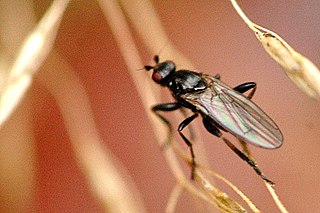
Sphaeroceridae are a family of true flies in the order Diptera, often called small dung flies, lesser dung flies or lesser corpse flies due to their saprophagous habits. They belong to the typical fly suborder Brachycera as can be seen by their short antennae, and more precisely they are members of the section Schizophora. There are over 1,300 species and about 125 genera accepted as valid today, but new taxa are still being described.

The Nematoceran family Axymyiidae is the sole member of the infraorder Axymyiomorpha, though it is often included within the infraorder Bibionomorpha in older classifications. It is known from only nine species in four genera, plus eight fossil species.
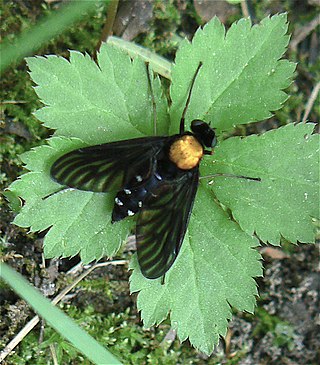
Chrysopilus is common, worldwide genus of predatory snipe flies. There are approximately 300 species in the genus, including fossil members that are sometimes found in amber.

The Lauxaniidae are a family of acalyptrate flies. They generally are small flies with large compound eyes that often are brightly coloured in life, sometimes with characteristic horizontal stripes, such as in Cestrotus species. Many species have variegated patterns on their wings, but in contrast they generally do not have variegated bodies, except for genera such as Cestrotus, whose camouflage mimics lichens or the texture of granitic rocks.

Xylomyidae is a family of flies known commonly as the wood soldier flies. They are xylophagous and are associated with dead or dying wood.

Lonchoptera is a genus of spear-winged flies (Lonchopteridae). Their common name refers to their subacute (pointed) wings, which have a distinct and sexually dimorphic venation.

Athericidae is a small family of flies known as water snipe flies or ibis flies. They used to be placed in the family Rhagionidae, but were removed by Stuckenberg in 1973. They are now known to be more closely related to Tabanidae. Species of Athericidae are found worldwide.
The Canthyloscelidae are a small family of midges closely related to the Scatopsidae.

Temnostoma is a genus of hoverflies. The larvae of some species feed on the wood of deciduous trees.
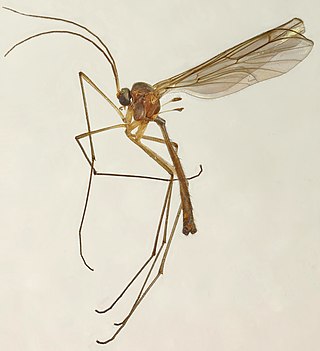
Bolitophila is the sole living genus in the Bolitophilidae, a family of Diptera in the superfamily Sciaroidea, with around 40 Palaearctic and about 20 Nearctic species, and three species from the Oriental region (Taiwan). They are small (6–9 mm).

The Bibionoidea are a superfamily within the order Diptera. The following families are included within the Bibionoidea:

Pachygastrinae is a subfamily of flies in the family Stratiomyidae.

Solva is a fly genus in the family Xylomyidae, the "wood soldier flies".
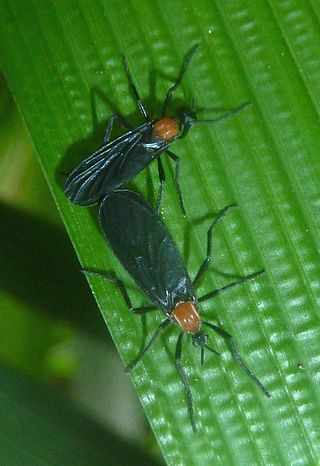
Plecia is a genus of March flies (Bibionidae) comprising many species, both extant and fossilised.
Bibiodes is a genus of March flies (Bibionidae).
Aptilotus is a genus of flies belonging to the family Lesser Dung flies.
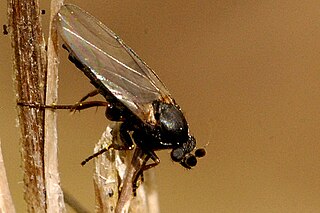
Anevrina is a genus of phorid flies circumscribed by the Italian naturalist Paolo Lioy in 1864.
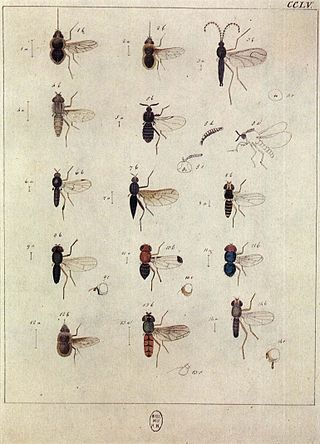
The family Pseudopomyzidae comprises minute to small (1.7-5.5 mm), dark-coloured acalyptrate flies; formerly they have been treated as a subfamily of Cypselosomatidae

Xylophagus is a genus of flies in the family Xylophagidae.
















